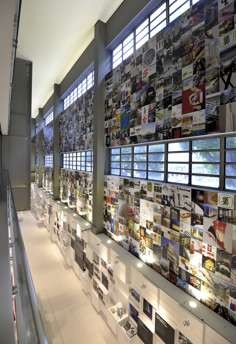
From Singapore’s flag to its public housing: celebrating 50 years of design in the Lion City
An exhibition at the city state’s National Design Centre shows how design has been woven into the fabric of the republic since its birth half a century ago
When Singapore started on its path towards independence in the late 1950s, it needed help from an unlikely source: designers. “Design is seen not just in the traditional form of aesthetics but also about designing systems, services and processes,” says Jeffrey Ho, executive director of the DesignSingapore Council, a government agency that promotes design. “Design has played a key role in the way Singapore’s systems were designed over the last 50 years.”
A young country needs an identity and that’s exactly what it got. First came the red-and-white national flag, with five Chinese stars and an Islamic crescent, which was unveiled in 1959. When Singapore became a republic six years later, it began a series projects that continue to define the city state, from a 1971 urban plan that called for the construction of modernist high-density housing estates, to Singapore Airlines’ sarong kebaya uniform, designed by Pierre Balmain in 1972, which draws inspiration from traditional Malay clothing.
Singapore turning into arts hub while Hong Kong still stuck in mud
Now Singapore is looking back at these designs and how they shaped the country. “We wanted to show that design is everywhere,” says Yann Follain, curator of “Fifty Years of Singapore Design”, an exhibition at the National Design Centre that charts the evolution of Singaporean design through the country’s first 50 years of independence.
The show delves into the private collections of designers and some of Singapore’s biggest companies to extract artefacts, archival photos and unexpected information. “The best help we got was from the designers themselves,” says Follain. Sometimes they needed a gentle push. “Most of the designers are very humble,” says Follain. “They all talk about their designs in service to something greater.”

When they did open up, the designers revealed some surprises, as when veteran industrial designer Chew Moh Jin mentioned in passing that he had designed the Unica plastic stool, a durable, stackable and ubiquitous piece of furniture found in nearly all of Singapore’s hawker centres and kopi tiam (traditional coffee shops). “It’s a product that everyone has used but nobody knew it was designed in Singapore,” says Follain.
The exhibition features other objects pulled from everyday life, too, like the emergency stop levers found on MRT trains. “It reveals the story behind things [Singaporeans] have been seeing for the past 50 years.”

Some of those threads start in Singapore’s earliest days, like Pandan Valley, which was Singapore’s first private condominium development when it opened in 1978. Designed by local architect Tan Cheng Siong, it blended high-density living with lush natural spaces, not only in the common areas between buildings but in the apartments themselves, many of which open onto large terraces.
That set a precedent for a later move towards nature-infused architecture, led by such architects as Wong Mun Summ and Richard Hassell, whose practice, WOHA, is known for buildings that explode with greenery. In recent years, Singapore has fashioned itself as a “biophilic city”, aiming to be sustainable and also deeply connected with nature. In 2010, a fenced-off concrete drainage canal running through Bishan-Ang Mo Kio Park was transformed into a natural stream and marshland accessible by park-goers.

Like Hong Kong’s public housing estates, Singapore’s HDBs function as self-contained communities with schools, markets, clinics and recreational facilities. Unlike Hong Kong, however, many of Singapore’s public housing estates make an effort to provide a level of quality similar to private developments. From afar, The Pinnacle@Duxton looks like a luxury development, but it is actually an HDB designed by local architects ARC Studio. Apartments are available in 35 different layouts, and each of the development’s seven towers are linked by skybridges at the 26th and 50th floors, forming a continuous loop of jogging tracks and green spaces accessible both to residents and the general public.
Singapore’s focus on users has led to a tradition of fine-tuning and gradual improvement. “The beauty of Singapore is that it is always observing and adapting itself,” says Follain.
In the past decade, young designers have begun to reflect on the roots of Singaporean design, producing works that reference the past or make some kind of deliberate comment on Singaporean identity. Greg Shand’s design for the Indian Heritage Centre, which opened last May, has a glass façade that reflects the surrounding historic shophouses during the day, while becoming a window onto a vivid mural of Little India imagery at night.
Art for the people: Singapore opens its HK$2.9b National Gallery
Design brand Supermama recently released OneSingapore, a series of porcelain dishware decorated with cheeky symbols of the city – HDB balconies, the Merlion (originally designed as a logo for Singapore’s national tourism office), the otherworldly “super trees” of Gardens by the Bay and even a tearful Lee Kuan Yew, who famously cried when announcing that Singapore would split from Malaysia.
Most of the items on display in “Fifty Years” are on loan from designers, companies and institutions, which is why the exhibition will run only until the end of 2017. But DesignSingapore isn’t ruling out the possibility that it could one day build a permanent design collection. “We are talking about the past, but we feel like we are at the beginning of something,” says Follain.

